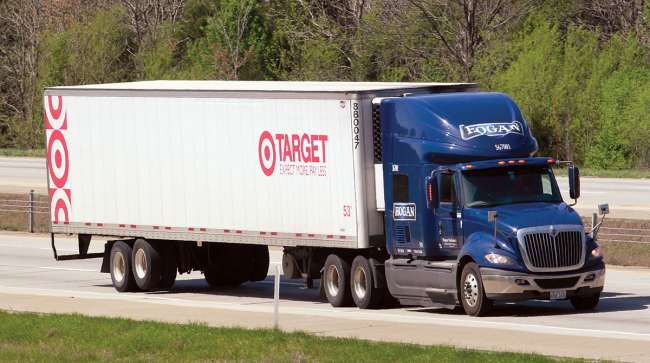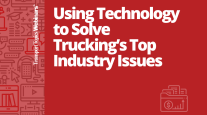Senior Reporter
Economy Stays Resilient During Pandemic

[Stay on top of transportation news: Get TTNews in your inbox.]
In the nearly two years of the COVID-19 pandemic, the U.S. economy has been battered and undergone substantial change. Through it all, economists and experts say it has shown remarkable resilience.
This was demonstrated by consumers shifting from spending billions of dollars on services, such as hotel rooms, airline tickets and dining out, to buying goods, many delivered by trucks.
“The labor market is solid, and people are spending money, and that’s good for our industry,” American Trucking Associations Chief Economist Bob Costello said. “That’s our economic forecast as of today, of above-average growth, well above average growth for the macroeconomy.”

Still, concerns remain.
On Dec. 10, the U.S. Labor Department reported the Consumer Price Index in November jumped 0.8% and reached a 40-year high of 6.8% on an annual basis as fuel, food, cars, rents and other items showed sharp increases.
“I do think that in the near-term, you are going to see an acceleration of inflation. But I don’t know that it sticks around for too terribly wrong,” Costello said. “And while this is hope at the end of next year, inflation will be closer to 3% a year from now, year-over-year.”
Fuel prices soared late in 2021, reaching a national-average high of $3.734 a gallon Nov. 15, according to Energy Information Administration data. The cost, though, has abated heading into the final weeks of the year.
For nearly two years, Rajeev Dhawan, director of the Economic Forecasting Center at Georgia State University, has been cautioning that trying to compare the 2019-20 pre-pandemic economy with what has been taking place and what’s ahead is unfair. He said the economy is significantly better than what it was in 2020, but until the pandemic recedes into history, significant challenges are ahead.

Dhawan
“What was normal in doing things in pre-pandemic times is not normal now. When it comes to inflation, employment and what people buy, they are all different in these pandemic times,” Dhawan told TT. “No one had ever seen in a pandemic that we would buy more stuff. But we did buy more things, and we used the stimulus money, and it became a supply chain disruption. This is a problem of plenty. We told people to buy things.”
Even with higher prices, sales are surging. The National Retail Federation said Dec. 5 that holiday sales could exceed even their rosiest forecasts from just a few weeks ago.
In late October, NRF forecast increased purchases between 8.5% and 10.5% from last year. Now the trade association said the jump could reach 11.5%, and that means the consumer would spend an all-time high of between $834.4 billion and $859 billion. The sales forecast excludes spending at automobile dealers, gas stations and restaurants.
“Consumers and retailers have both revised their playbooks and broken with previous traditions,” NRF Chief Economist Jack Kleinhenz said. “With the momentum we’ve seen so far likely to continue, it seems probable that we will exceed our initial projection.”
Dhawan believes a new economic model is being constructed, and he and other economists are waiting to see how it develops post-pandemic.
“The economy is changing and trying to use the lens of the pre-pandemic definition, stagflation, inflation, unemployment and other stuff, it just gets you into trouble,” Dhawan said. “You’re using the wrong lenses. You’re looking at the right things but the wrong definition. The virus is leading the economy’s overall direction.”
Several factors are impacting trucking. On both coasts and in the Gulf of Mexico, the nation’s ports set records for containers. Because of the surge in demand for goods, the volume of imports is expected to continue well into 2022 and likely beyond.
“I don’t see the situation at the ports slowing down,” IHS Markit Transportation Economist Paul Bingham told TT. “The demand for goods is just so high.”
That continues to put a strain on truck drivers, especially at the nation’s two largest ports, Los Angeles and Long Beach, where at one point the number of loaded containerships in San Pedro Bay waiting for a berth exceeded 80. By mid-December, the number of vessels waiting and empty containers had receded.
The explosive growth of e-commerce also continues as fewer goods are being sold at traditional brick-and-mortar stores and instead are being delivered directly to homes and businesses. Revenue from e-commerce in the U.S. totaled $431.6 billion in 2020. The Statista Digital Market Outlook estimates that by 2025, it will increase 30.5% to $563.4 billion.
Want more news? Listen to today's daily briefing below or go here for more info:




